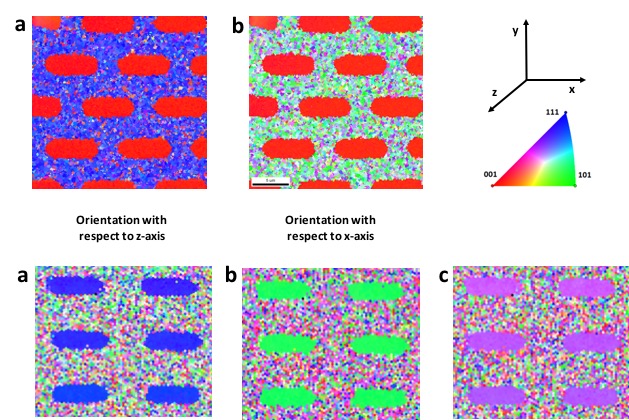Synthesizing materials with both high strength and ductility is a longstanding goal of materials scientists and engineers. Unfortunately, these properties are almost always mutually exclusive, leading to the well known strength-ductility trade-off. Over the past decade, materials with multimodal microstructures (Multimodal materials) have been extensively investigated to overcome this trade-off. Multimodal materials, which are comprised of two or more distinct sets of grains with highly dissimilar average sizes varying from tens of nanometers to several micrometers, offer significantly higher strength than coarse-grained materials but also possess considerable ductility.
However, there has been little or no systematic experimental exploration of how microstructural parameters such as the volume fraction of coarse and fine grains, their relative sizes and spatial arrangement influence the properties of Multimodal materials. The main limiting factor for such studies is the lack of a robust synthesis technique through which these microstructural parameters can be independently controlled. We have developed a new method to synthesize metallic films with multimodal microstructures, wherein these microstructural parameters can be precisely defined. In addition, the overall microstructural architecture (fine grains in a coarse matrix or vice versa) of the films can also be varied as desired.

Top: Electron backscatter diffraction (EBSD) image of a thin film with bimodal microstructure. The grains are colored according to their orientation with respect to z-axis (out-of-plane) in (a). The coarse grains have a (001) orientation (see standard triangle legend). The fine grains have predominant (111) texture. (b) EBSD image of the same area as in (a) but colored using orientation of grains with respect to the x-axis. The coarse grains still have a (001) orientation but the fine grains have random orientations.
Bottom: EBSD image of another film with bimodal microstructure that has a different arrangement of grains. The coarse grains have a (111) orientation with respect to z-axis and (110) orientation with respect to x-axis. The fine grains have random orientations with respect to the x-, y- and z-axis.

